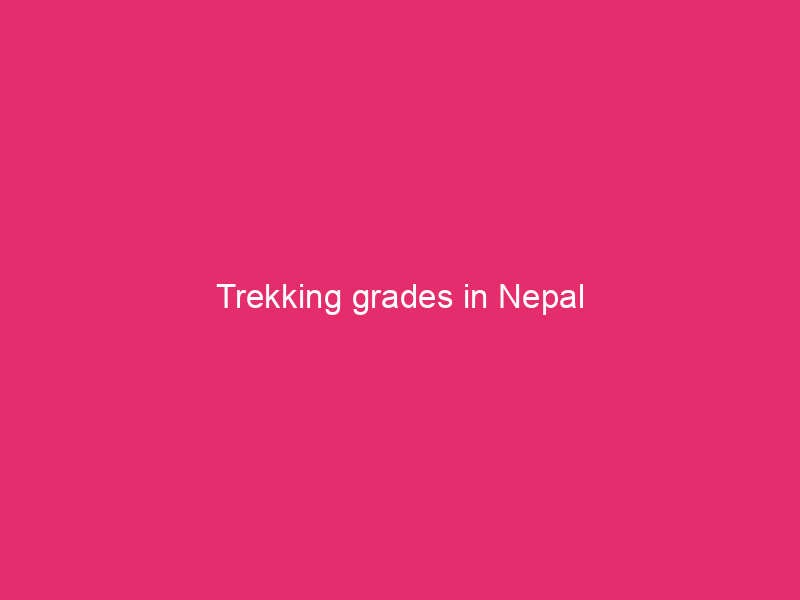The following factors are taken into account when rating walks:
– The total duration of the trek.
– The duration of the stay at high altitude (+3000m).
– The maximum altitude difference per day.
– The state of the land.
– The average duration of the daily stages.
– Night temperatures.
However, we want to warn our hikers that the level of difficulty of a hike is very subjective. Weather conditions, your physical condition, possible health problems during the hike and other factors can have an important influence on how you experience a hike.
Mountain trekking in Nepal GRADE 1: Short, light daily stages on passable trails that are generally in good condition. The maximum altitude difference is less than 300 m. The night temperature remains above freezing.
Mountain trekking in Nepal GRADE 2: Daily stages of 5 to 6 hours on good passable trails. Altitude differences of up to 800m below 4000m. Nighttime temperatures can drop below freezing.
Mountain trekking in Nepal GRADE 3: Daily stages of 4 to 7 hours a day. The trails are usually very passable, but some high altitude passes above 4000m can be steep. Possible snow on high-altitude passes can test your endurance. Good condition recommended.
Mountain trekking in Nepal GRADE 4: Walks of more than 15 days with daily stages of 4 to 8 hours. Altitude differences of up to 1000m below 4000m. One or more high altitude passes above 5000 m. Most nights temperatures below zero. Sometimes difficult camping sites. Good condition is a requirement.
Mountain trekking in Nepal GRADE 5: Walks and ascents of more than 15 days. Walking through very difficult terrain requires basic mountaineering knowledge. Nights at very low temperatures. Strong endurance and very good physical condition are required.
Rescue : Although ninety-nine percent of the time an emergency rescue evacuation will not be necessary, emergency situations arise in the Himalayas in which diseases, acute mountain sickness (AMS), snowstorms, landslides land and avalanches are the main causes of the rescue being carried out. In a non-life-threatening situation, we will arrange for porters to take you to the nearest health post or hospital. When the situation is most serious, one of your Sherpas will rush to the nearest communications center where you can request a helicopter rescue at our Kathmandu office.
It is highly recommended to purchase travel insurance to cover the emergency helicopter rescue flight. In order to contact your insurance company, in case of a rescue and not lose valuable time, the trekking agency needs the coordinates of the local representative of your insurance company in Nepal.


Comment here